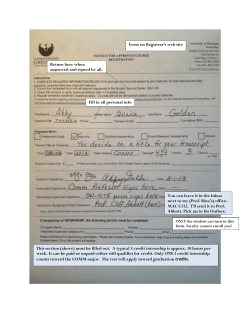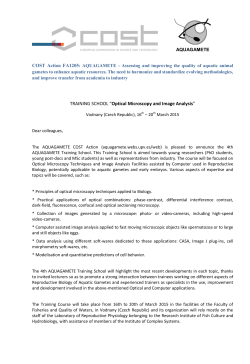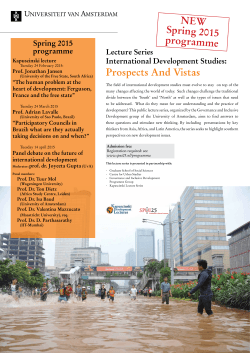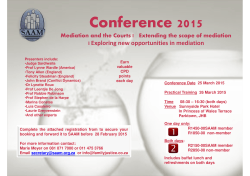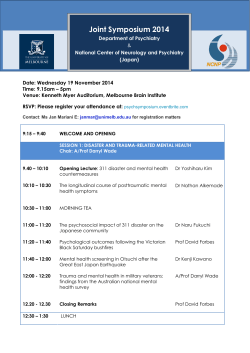
Here - Liquid Crystals and Photonics Group
Vacancies for Early Stage Researchers at UGent - August 2015 Vacancy 1: Liquid crystal devices for beam steering and lensing Liquid crystals are widely used in display devices but their electro-optical properties can also be used in many other applications. In smart phones the autofocus is based on a small lens that can move with respect to the camera, and it would be more reliable to use an electronic component without mechanical parts. By reorienting LC molecules with a voltage, the refractive index and the optical path length can be modified, which is the basis for optical components like prisms and lenses. Recently we found that adding a high index dielectric layer over the electrodes makes it possible to obtain smooth voltage variations, which is the equivalent to smooth optical surfaces. The aim of this project is to design, realize and optimize optical components based on electrodes, high dielectric layers and liquid crystal. Contact: Prof. J. Beeckman, Prof. K. Neyts Vacancy 2: Analysis of electronic ink for video rate applications Electronic ink has been used in slow-switching black and white paper-like displays for many years. These displays operate in reflective mode without backlight and therefore their energy consumption is very low and battery lifetime is several weeks. There is considerable interest in color displays and faster switching times based on electronic ink. In a new project we want to study the motion of charged, colored particles in a non-conductive liquid under influence of an electric field in a novel optical geometry based on particle motion in the evanescent field. This should allow high speed switching, combined with low power. This project is in collaboration with two industrial partners (in the UK and Canada). Contact: Dr. F. Strubbe, Prof. F. Beunis, Prof. K. Neyts Vacancy 3: Light emitting layers with designed optical properties In today’s liquid crystal displays, white light is generated by LEDs, coupled to a waveguide plate and scattered towards the viewer with homogeneous intensity. This part of the display is called the backlight and then the light has to pass a scatter-free component with color filters, polarizers, liquid crystals and driving transistors. Recently, red green and blue quantum dots are used to enhance the color purity and the transmission of the color filters. In this project the aim is to design and realize an emitting layer that is able to emit RGB light that is highly polarized, in order to avoid losses in the polarizer. The inverse application is a waveguide plate to transfer fluorescent light to solar cells on the edge of the plate. The plan is to evaluate different technologies to realize these goals (organic layer deposition, dye doped liquid crystal and oriented quantum rods) and focus on the most promising. Contact: ir. M. Callens, Prof. K. Neyts You are the person we are looking for if • • • • • You (soon will) have a master degree in photonics, physics, applied physics or electronics. You have very good study records, and are research oriented. You are a motivated, communicative team worker. You are aiming towards a doctoral degree (3-4 years). There are no limitations regarding nationality. We can offer you • • • • A paid PhD position. An ambitious and dynamic environment in a successful, international research group www.elis.ugent.be/ELISgroups/lcd/ The group is a partner in the UGent Center for Nano and Biophotonics http://www.ugent.be/nb-photonics/en/ Experience in technology, electrical and optical measurements and simulations. Contact Send your CV and motivation to one of the contacts or to kneyts@elis.ugent.be
© Copyright 2025


